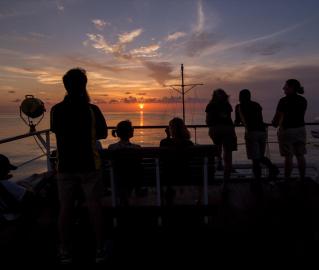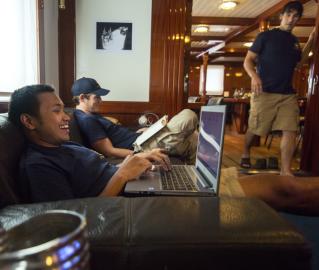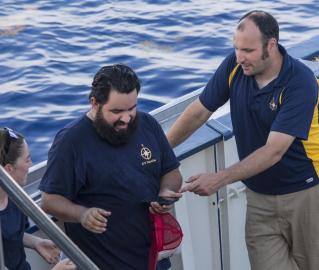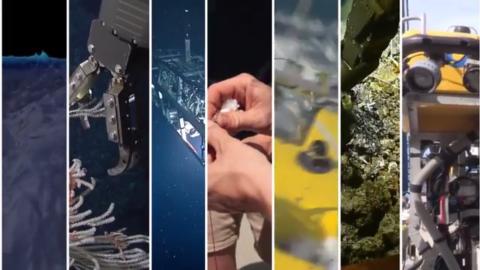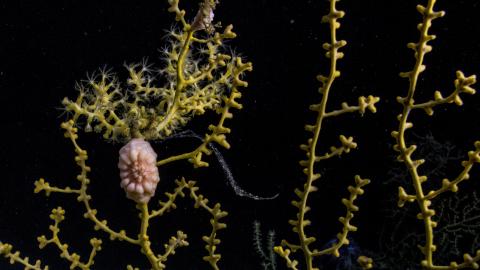Exploring the Straits of Florida
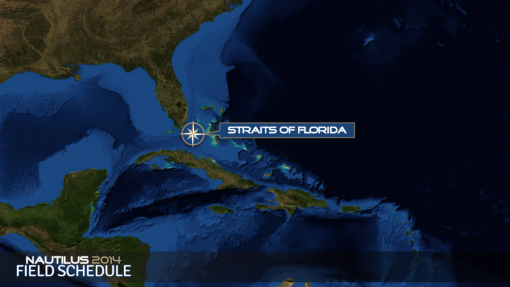
Key Objectives:
-
Explore a canyon seascape and associated ecosystems
-
Study cold water-coral diversity and habitats
-
Search for methane cold seeps and associated communities
-
Look for evidence of past tsunami-generating events, including earthquakes
The first leg of the 2014 E/V Nautilus Expedition will take place off the southeast coast of Florida to study and explore the diverse landscapes and communities of life that thrive in the cold waters of the region. Although the Florida Straits are relatively close to both the United States and the Bahamas, the deep waters here remain almost entirely unexplored.
The Straits of Florida is a deep trough that separates the Florida Peninsula from Cuba and the Great Bahama Bank. That bank is part of a 3.7 - 6.7 mile thick deposit of sediment called a carbonate platform that was formed over one hundred million years ago, either during the late Jurassic or early Cretaceous period. Initial surveys have shown that the deep waters of the Straits provide a habitat for one of the most rich and diverse biological communities in the Atlantic Ocean. The Straits have strong, persistent currents which create a consistent influx of nutrients that create a habitat for deep sea creatures that extends through the Straits all the way from the northern tip of South America.
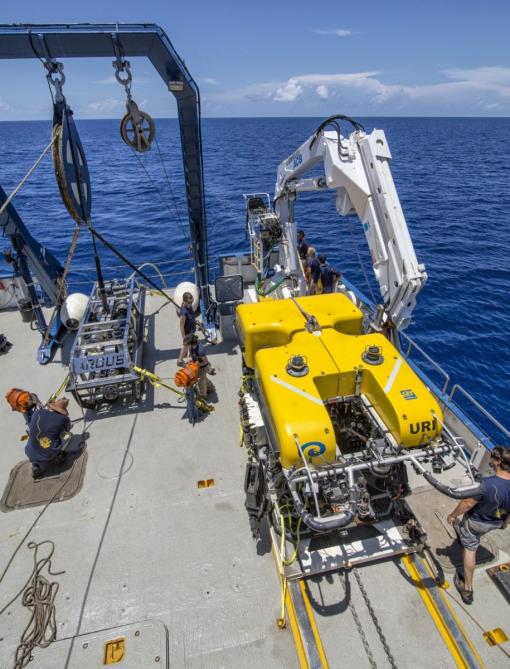
One area of focus during the cruise will be on the cold-water ecosystems of the Straits, with an emphasis on coral in the region. From previous studies of the region it appears that the coral communities are more diverse here than in similar cold-water areas, and the Corps of Exploration will study various geological, oceanographic, and chemical processes to determine whether or not this is actually the case. They will also use Hercules and Argus to study various regions within the Straits to determine how the biological communities differ between the northern and southern sections.
Another objective of the cruise is to study several identified geological hazard sites in the area. The edges of the Great Bahama Bank are at risk for catastrophic slope failures, causing underwater landslides. These landslides are one of the major causes of tsunamis. The Corps of Exploratoin will examine the scars of several past slope failures and gather data that will help scientists better understand the process so they can work to develop better methods to predict such events in the future.
The entire 2014 Nautilus expedition will be broadcast live on our homepage, so tune in to explore the Straits of Florida alongside the Corps of Exploration and experience their discoveries in real time.
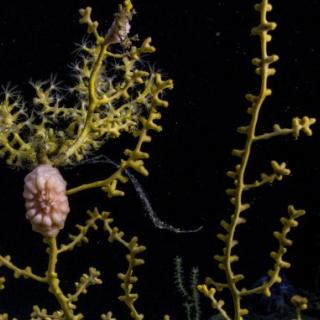
Straits of Florida
This cruise will focus on the discovery of new cold-water ecosystems and improved understanding of underwater geological hazards and processes. The Straits of Florida is a trough that separates the Florida Peninsula from Cuba and the Great Bahamas Bank. Due to the differences in geological, oceanographic, and chemical processes within this region, the deep water contains some of the greatest species richness in the Atlantic Ocean.
